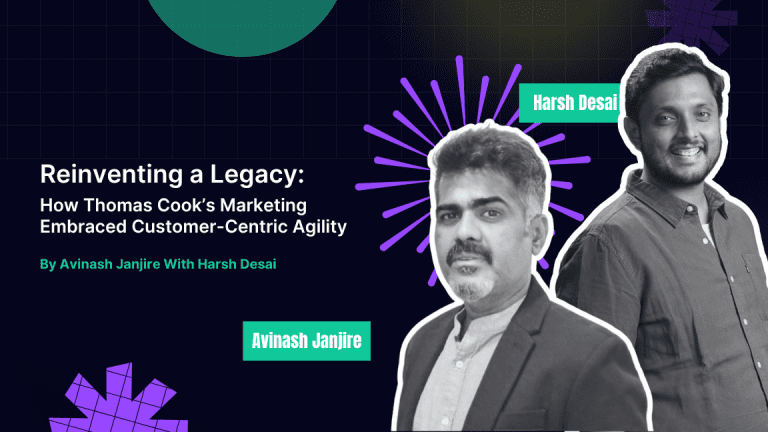There’s a good chance you’ve heard of DesignOps although you can’t be faulted for not being familiar with it. It’s a relatively new practice that has only picked up steam in the last few years. With a handy shortening of ‘Design Operations’ and inspired by the more mature ‘DevOps’ or ‘Developer Operations’, the number of openings for the role have been on the rise.
In order to take a structured approach to a topic that is complex and not often discussed in most organizations, we’ll take the 5W and 1H approach – what, why, where, when, who, and how.
The creation of this function falls on the Design Leader. The first task is to set expectations right with organizational leadership, and functional leaders that need design support, as well as the entire design team that reports. Being able to clearly express the 5Ws and 1H could be the difference between an emphatic yes or a downright no, or perhaps an even worse outcome – that of indifference.
While this piece is intended to help Design Leaders get a quick overview of DesignOps and how to go about it, I’d urge leaders in Product, Marketing, Growth, and Engineering to read through it. And if you’re a Founder of an early-stage startup, this is highly relevant and could help you think through your entire organization structure as you prepare for the next phase of growth.
Strap in. This is going to be a short but impactful ride. Ops we go. 🚀
What: Defining DesignOps
As with any new practical concept, providing a definition is important in setting the right expectations. By doing so, it becomes easier to determine if the time is right for one’s organization to create a DesignOps function.
Rather than try to define it ourselves, we looked to design leaders who have been at the forefront of this new movement. Here are some of the most impactful and succinct statements we came across.
Design Operations focuses on the health of the practice, the people, and the projects.
– Kristin Skinner at the 2017 DesignOps Summit
Kristin Skinner also co-authored ‘Org Design for Design Orgs’ with Peter Merholz. The book is one of the finest pieces of literature for leaders looking to build a world-class design team.
Design Operations focuses on the how so that design can focus on the what. It is the design discipline that owns the intentional operationalizing, optimizing and scaling of design.
– Rachel Posman, Director of Design Operations at Salesforce
Dave Malouf, the founding member of the Interaction Design Association (IxDA), describes DesignOps as
the connective tissue, lubrication, and rails that amplify the value of a design team. At Atlassian, we think of this as putting the appropriate tools, instrumentation and processes in place so that we get to “learn” as quickly as possible.
– From the Atlassian blog
In a nutshell, DesignOps helps design teams become the best version of themselves through a deliberate evolution. Design leaders can’t just wake up one day and flip a switch. It’s an iterative process that can take many months; and sometimes, those months just might stretch over a dozen.
One could look at DesignOps as the intersection of various skill sets and functions at play.
Key Takeaways
DesignOps is about 3 main things:
- Practice: Processes, Tools, Instrumentation
- People: Members of the Design Team, Cross-functional teams that work with design
- Projects: Planning of resources, finances, and logistics
Why: The Need for DesignOps
The foremost function of DesignOps is to bring a method to the madness. While creativity needs its room to blossom, systems enable it to thrive.
A growing company is in a state of constant evolution. It is defined as much by its products as the people that come together to build them.
At product organizations, teams across design, engineering, product management, and marketing work together in a collaborative effort to deliver the best possible experience to users. While design in the past might have been part of an assembly line process with a final hand-off to developers, today’s product development cycle cannot function in silos.
DesignOps exists to help structured teams function efficiently.
*While design hand-off is, no doubt, an invaluable step, it is important to remember that hand-offs aren’t a moment in time, but a process and should be baked into the process early on.
- Amber Jabeen (Sr. Manager, DesignOps at Delivery Hero MENA – Talabat) Source: UX Pin – Design Ops Guide*
When: The Right Time for Implementation
Timing is perhaps the most crucial aspect for things to really work. The smartphone wasn’t invented in 2007 by Apple. IBM and Palm launched early versions of touchscreen products that were portable and aided in productivity; this was back in the mid-nineties. But the lack of real infrastructure for high-speed connectivity, and the low penetration of the internet prevented mass adoption. The tech was great for the era, but the timing just wasn’t right. In hindsight, it looks so obvious that one questions the market research leading up to the launch.
That’s a long analogy to try attempting a simpler explanation. Timing isn’t something one can easily identify; the factors are complex and the signals are few.
While we’ll attempt an answer, we hope to bring more depth to it in our upcoming podcast series focused on DesignOps. You can signup for the waitlist here.
These are some of the signs that might warrant exploring if it’s time to have DesignOps set up in place. Some of the signals:
- Inefficiency: less is being done than should
- Uneven Distribution: some team members are loaded with more projects they can handle while others might not have enough work allocated
- Delays: Deadlines are being missed very often
This isn’t an exhaustive list. As a design leader, you’ll instinctively feel the need to bring method to the madness even though it seemingly works. On the surface, it might look like everything is fine, but under the surface, there may be turbulence. This becomes evident when onboarding a new team member. Is the new designer able to onboard easily? Or does the team run on unspoken or non-codified rules that require the new hire to learn through verbal communication rather than documentation?
DesignOps isn’t to be taken lightly. It requires time and cooperation from all participants in order to work. The creation of systems, processes, realignment of roles, and other aspects can disrupt the current order and lead to unintended consequences. We touch upon in the next section.
One last thing worth mentioning. At early-stage companies, it’s more important to get things done rather than structure how things should get done. If your design team is small and everyone has visibility of what’s happening in the design organization, there’s a good chance you don’t need to have a full-fledged DesignOps function. That doesn’t mean you throw organization out the window completely; implement things slowly, gradually inching toward the greater structure.
Where: What does the org structure look like and where does DesignOps sit?
In their masterpiece of a book, Org Design for Design Orgs, Peter Merholz, and Kristin Skinner focused a chapter on various organizational structures and the evolution of design organizations. We summarized some of the learnings below.
Centralized Internal Services
The design function almost acts as an in-house agency. While this was in vogue much earlier when the monolithic organizational structure was the norm, it has fallen out of fashion due to inherent drawbacks that far outweigh the benefits.
- Benefits of centralization
- Enables an internal design community and culture
- Designers get to work on a variety of projects
- Leads to consistent user experience
- Clarifies who is in charge
- Make workflow efficient
- Drawbacks of centralization From a business perspective, centralization makes sense. But the detriment to morale is the strongest reason why it no longer is in favor.
- Designers feel disempowered
- Disempowerment leads to a lack of ownership
- “Us versus them” attitude; a resentment with other teams
- Priorities and timelines communicated by other teams might not make sense for designers
Decentralized and Embedded
Decentralized and embedded is an evolutionary path that’s taken after a centralized services team fails to work.
Here, designers are embedded into various teams in the organization that are focused on different products or features of the product. They often work together with a PM and a few engineers.
The design head’s role is more consultative in nature and strategic. They provide guidelines and help these teams with ‘embracing design’ but are no longer involved in the hiring or creative direction.
Source: Org Design for Design Orgs by Peter Merholz and Kristin Skinner
- Benefits of decentralized design teams
- Development is speedier and iterative
- Designers feel empowered and are treated as full team members
- Greater ownership for the end product delivered and quality of output is higher
- Drawbacks of the decentralized organization It might all sound rosy but over time the cracks reveal as designers now work in siloes of their team which is focused on a product or a feature.
- The focus is on one problem for a long time; designers need some novelty
- Disconnected from other designers, loneliness creeps in
- It becomes hard to create a design culture and community
- The user experience is fractured and user research is siloed
- Duplication and disconnected design language start causing inefficiency and inconsistencies
Centralized Partnership
A centralized partnership brings together the best of both worlds centralization and decentralization.
In this system, the design team is centralized. However, unlike in a centralized system where they are a general pool of resources, they are organized into skills-complete teams. Thus, they can be allocated to specific aspects of the business.
Source: Org Design for Design Orgs by Peter Merholz and Kristin Skinner
In a conversation with Santosh Hedge, VP – Design at Yuni, he spoke about how organizations run into problems whenever they opt for either vertical or horizontal structures. He strongly advocated for the structure of a centralized partnership that merges the two.
This system is a win-win for designers and the teams that partner with them. A design culture can be built, design systems created, user experiences made consistently, duplication in effort and assets eliminated, and a host of other benefits.
Most importantly, this structure allows for the most efficient setup of a DesignOps function.
How: Setting up a DesignOps Function
As mentioned earlier, setting up a DesignOps function is as hard as it gets. It’s a 3-step process to follow:
- Research the Problem Space: Identification of operational pain points in the design organization and cross-functional teams that rely on design
- Define DesignOps Value: What is the purpose of DesignOps and what is the intention with context to the organization
- Prioritize and Roadmap: Goal-setting and planning. What are the initial steps that can be put into action within realistic timeframes?
Source: 3 Steps for Getting Started with DesignOps by Norman Nielsen Group
The DesignOps Menu
As prescribed by the Norman Nielsen Group, DesignOps’ objective is to provide the framework for the following: how we work together, How we get work done, and how our work creates impact.
Their framework further breaks this down into key items that can be tackled in a systematic way, or perhaps even a piecemeal approach.
How we work TOGETHER
| Organize | Collaborate | Humanize |
|---|---|---|
| Organizational structure | Rituals and meetings | Hiring and onboarding |
| Team composition | Environment | Career development |
| Role definition | Communities of practice | People operations |
How we get work DONE
| Standardize | Harmonize | Prioritize |
|---|---|---|
| Guiding principles | Design systems | Balancing workflow |
| Design process | Research hubs | Estimation |
| Consistent toolsets | Asset management | Allocation |
How our work creates IMPACT
| Measure | Socialize | Enable |
|---|---|---|
| Design standards | Socialize | Skills training |
| Design metrics | Reward and recognition | Playbooks |
| Definitions of good and done | Value definition | Education |
Who: What does a DesignOps team look like?
Every company is different and your approach to the DesignOps team structure will be specific to your requirements. However, the tools provided throughout the article can act as guidance.
Let’s look at the setup of the DesignOps team at Airbnb.
- Design Program Management: Driving our operational strategy and owning and evolving a holistic design process.
- Design Tools: Building tools to empower and amplify designers as well as bridging disciplines.
- Localization: Making sure Airbnb’s language is truly international and radically local.
- Production Design: Ensuring our design is executed to the highest quality across Product and Marketing initiatives.
- Team Coordinators: Keeping teams healthy and happy and leadership sane.
In Conclusion
DesignOps is a complex subject that spans well beyond design. Approach it with care and caution. While this article is intended to give you a fair overview, it’s only the tip of the iceberg. But more companies are embracing DesignOps in order to achieve the organizational utopia of Gestalt (the whole being greater than the sum of its parts).
This is why we’re crafting a comprehensive video podcast to cover the subject in depth. Together with India’s top design leaders and practitioners, we’ll create the ultimate resource for organizations to create their own DesignOps setup.






